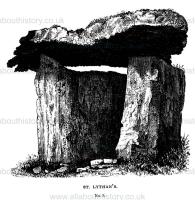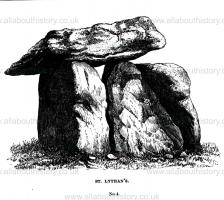Text this colour links to Pages. Text this colour links to Family Trees. Place the mouse over images to see a larger image. Click on paintings to see the painter's Biography Page. Mouse over links for a preview. Move the mouse off the painting or link to close the popup.
All About History Books
The Chronicle of Walter of Guisborough, a canon regular of the Augustinian Guisborough Priory, Yorkshire, formerly known as The Chronicle of Walter of Hemingburgh, describes the period from 1066 to 1346. Before 1274 the Chronicle is based on other works. Thereafter, the Chronicle is original, and a remarkable source for the events of the time. This book provides a translation of the Chronicle from that date. The Latin source for our translation is the 1849 work edited by Hans Claude Hamilton. Hamilton, in his preface, says: "In the present work we behold perhaps one of the finest samples of our early chronicles, both as regards the value of the events recorded, and the correctness with which they are detailed; Nor will the pleasing style of composition be lightly passed over by those capable of seeing reflected from it the tokens of a vigorous and cultivated mind, and a favourable specimen of the learning and taste of the age in which it was framed." Available at Amazon in eBook and Paperback.
St Lythans Burial Chamber is in St Lythans, Glamorganshire, Prehistoric Wales Neolithic Burials.
St Lythans Burial Chamber [Map] is a tall Neolithic tomb chamber with large capstone which would originally have been covered in earth and stone. The massive capstone is supported by three unusually tall uprights.
Archaeologia Cambrensis 1874 Pages 59-. The St. Lythan's Cromlech [Map] is certainly a fine one, and, with the exception of the eastern end, presents a perfect chamber. Not a vestige remains of the tumulus, as might have been expected, as it was probably composed of earth. It stands east and west, and presents a chamber 7 ft. 10 ins. by 5 ft. The south wall is formed of a stone measuring 11 ft. 4 ins., while the north one is only 10 ft. 1 inch; so that it seems to have lost a stone which would have made the two side- walls of equal length, a necessary consideration if it were desirable that the eastern slab should fit as closely as possible, so as to leave few interstices to be filled up with small stones. It is generally thought that the three sides of a chamber were first erected, and the capstone placed thereon; then the interment took place, and the fourth side placed last, and the tumulus completed. That such was the practice there can be little question, if it is conceded that the proper course would be to complete the chamber as far as possible before the interment took place. To erect the four sides, then inter, and finally place in position the capstone, would be more inconvenient; and in the case of large capstones, risk to the remains interred would be incurred in case any accident happened in the moving of the capstone into place. As arrangements, moreover, for future interments were necessary, one side must be capable of being removed,which must, therefore, have not supported the capstone; so that it was far more convenient to build up only three sides on capstones, and complete the fourth after the interment. Hence it is that this part of a chamber is almost universally wanting, the other parts generally owing their preservation as contributing to support the capstone.
Cut No. 3 is from a drawing of Mrs. Traherne of Coed-riglan, who has kindly placed it at the disposal of the Society.
Cut No. 4 presents the western view, or back of the cromlech, and is copied from a stereoscope of the Eev. Walter Evans, by Arthur Gore, Esq., to whose ready pencil the Association has been on so many occasions indebted. The general view of this cromlech is exceedingly fine, presenting a grand, massive appearance which any engraving must fail to reproduce.


![]() Become a Member via our 'Buy Me a Coffee' page to read complete text.
Become a Member via our 'Buy Me a Coffee' page to read complete text.